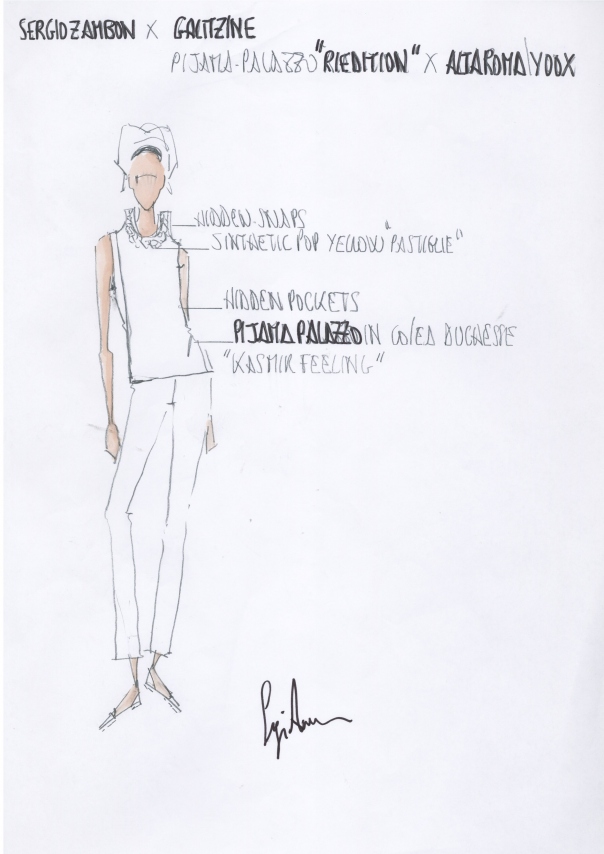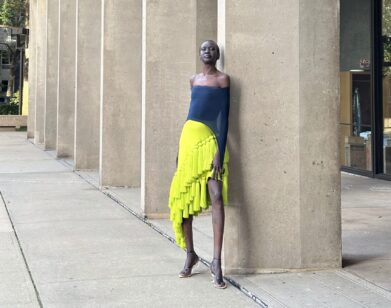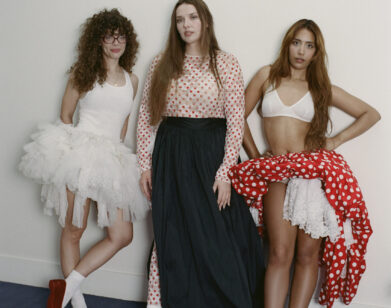Rome’s New Day
There are all too many reasons to go to Rome, but until recently fashion—as in following the spectacle of it—wasn’t one of them.
But Rome has always been fashionable. Anita Ekberg’s evening-gown shower in the Trevi Fountain for Fellini’s La Dolce Vita (1960) fixed that forever. Rome was a fashion capital throught the ’60s, when AltaRoma’s Roberto Capucci and Princess Irene Galitzine and her “palazzo pajamas” catered to aristocrats, actresses and café society—a glamorous group including Princess Grace of Monaco, Jacqueline Kennedy, Audrey Hepburn, Elizabeth Taylor, Catherine Deneuve, Silvana Mangano, Monica Vitti, and Sophia Loren. After the upheavals of 1968, Rome’s fashion star began to wane as ready-to-wear from Paris and Milan took off.
Today, AltaRoma is on the comeback trail as a platform for up-and-coming Italian brands thanks to the efforts of its president, Silvia Fendi. This summer’s edition was packed with events on top of couture: the women’s leg of Italian Vogue‘s “Who Is On Next” young designer competition; “Limited/Unlimited,” a show of more than 40 emerging talents from all over Europe, and “Todo o Nada,” a compilation of Mario Testino’s photography at Rome’s Fondazione Memmo [on view at Palazzo Ruspoli Via Del Corso 416 through November 23].
What makes fashion in Rome look so good right now? Well, there’s an abundance of talent: from Maria Grazia Chiuri and Pier Paolo Piccioli at Valentino to Fendi’s graphic bags and Delfina Delettrez, Silvia Fendi’s beyond-talented jewelry-designing daughter; and menswear talent Fabio Quaranta and women’s designer Marco de Vincenzo, both Rome-based past winners of “Who Is On Next” competition. Not to mention Ilaria Venturini Fendi, whose Carmina Campus bags and RE(f)USE store in Rome have transformed recycled and sustainable production in Africa into high style; the eccentric women’s collection of Sergio Zambon and Italian couture master Roberto Capucci, now in his 80s, who treks to Asia annually to teach master classes.
For Pascal Gautrand and Andrea Spezzigu, authors of The Women’s Tailor-Made Guidebook, ROME, (Palombi Editori) an A-Z repertory of 220 establishments offering handmade and made-to-measure clothing, the secret to Rome’s style is its pool of artisans running businesses the same way their parents, grandparents, and great-grandparents did. The guide launched during AltaRoma at the Villa Medicis. On hand was Micol Fontana, 98, one of three sisters of the illustrious Roman couture house Sorelle Fontana. “Zoe, Giovanna and I grew up with needle and thread in hand, and we liked to think we had pins running through our veins instead of blood, ” she writes in the guide’s introduction. Fontana recalls “looking after the dresses” on the set in Mexico with Ava Gardner for her role in The Sun Also Rises (1957).
Over a plate of fried zucchini blossoms one hot afternoon with Gautrand at Al Biondo Tevere da Vincenzo, (Via Ostiense, 178) a terraced trattoria overlooking the Tiber, where Luchino Visconti filmed Belissima with Anna Magnani, and where legend has it Pasolini had his last meal, it’s easy to see how Rome past and present is ripe for fashion re-discovery. “Rome is a world unto itself,” says Gautrand. “Most Roman sartorie [shirtmakers] cater exclusively to locals. They’re not looking beyond the city yet to enlarge their clientele—but they should.”
Silvia Fendi’s concept for AltaRoma’s annual “Limited/Unlimited” show is to promote the best of Italy’s young brands with a sprinkling of like-minded European labels. Most of these, Like Leitmotiv, a Bologna-based line known for its classic and whimsical prints mixed with embroiderey by Colombian designers Fabio Sasso and Juan Caro, shows in Milan, where the flood of big-name activity marginalizes them. Leitmotiv won the Yoox.com award for innovation at “Who Is On Next” in 2009 and now sells in 95 stores in Italy, Japan, Russia and the U.S. The line doesn’t sell in New York yet, but that will change soon.
Adding a twist to “Limited/Unlimited” this season, Fendi teamed eight young designers with storied AltaRoma names for “RE/EDITION,” a kind of design game whose results are available exclusively on Yoox.com. Russian shoe man Max Kibardin, who launched his racy stilettos brand in Milan in 2005, took on the Albanese “Cock” shoe, one of the house’s most adventurous models, introduced at the end of the 60s and special-ordered by Imelda Marcos herself (who had the cock’s eyes replaced by 1.5 carat diamonds). Kibardin says he wants his version “to convey the delicacy and fragility of nudity” and has a kind of fin-de-siècle showgirl look. Sergio Zambon took on Princess Irene Galitzine’s “palazzo pajamas,” which put her and AltaRoma on the map in 1960 when Harper’s Bazaar editor Diana Vreeland coined the term to describe her jeweled silk tops and loose matching pants. “Galitzine’s chic pajamas have always been at the top of my hit list,” he says. “They’re a perfect interchange between fashion and function.” I second that and suggest purchasing Zambon’s version on Yoox.com, followed by a one-way ticket to Rome.







